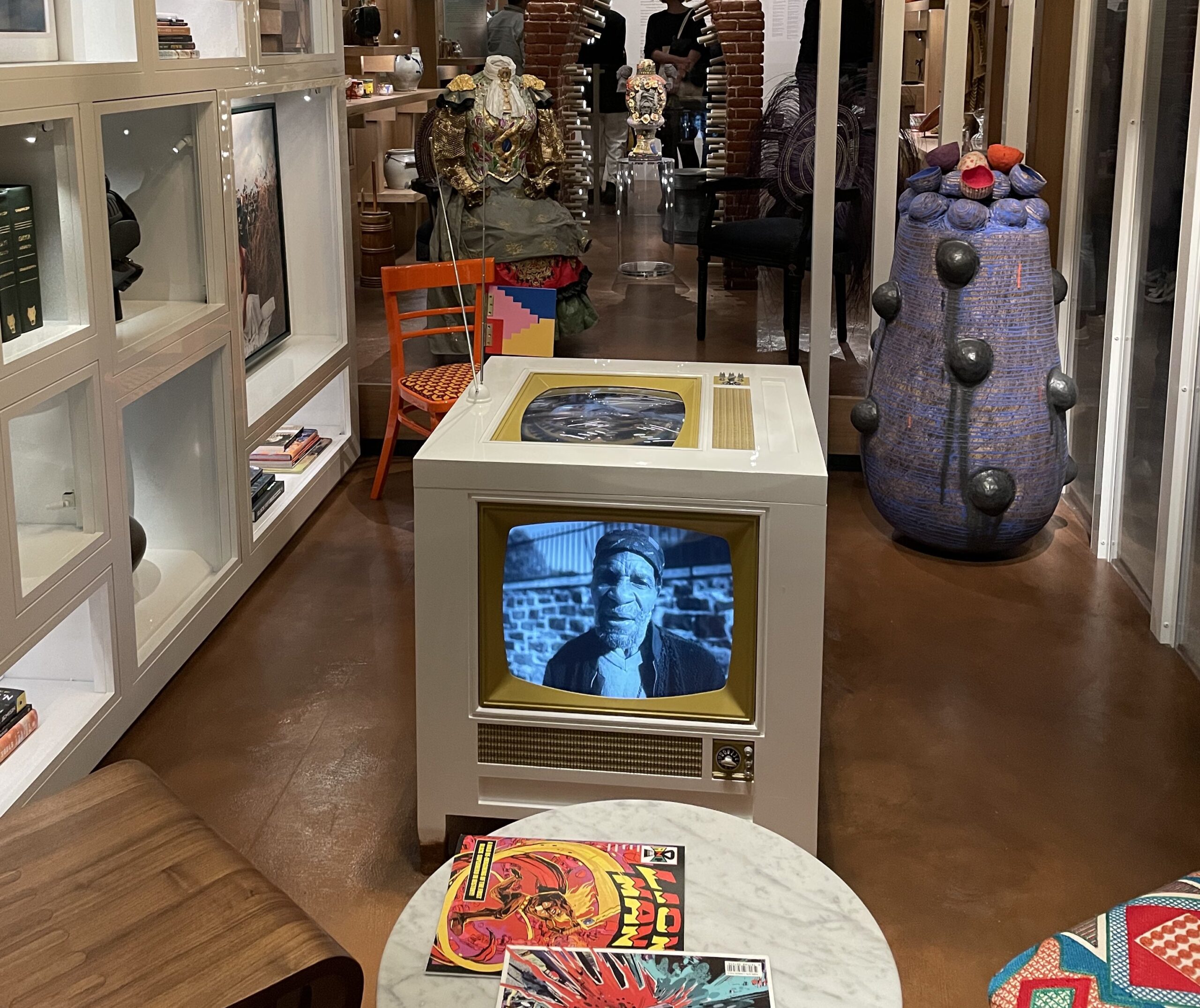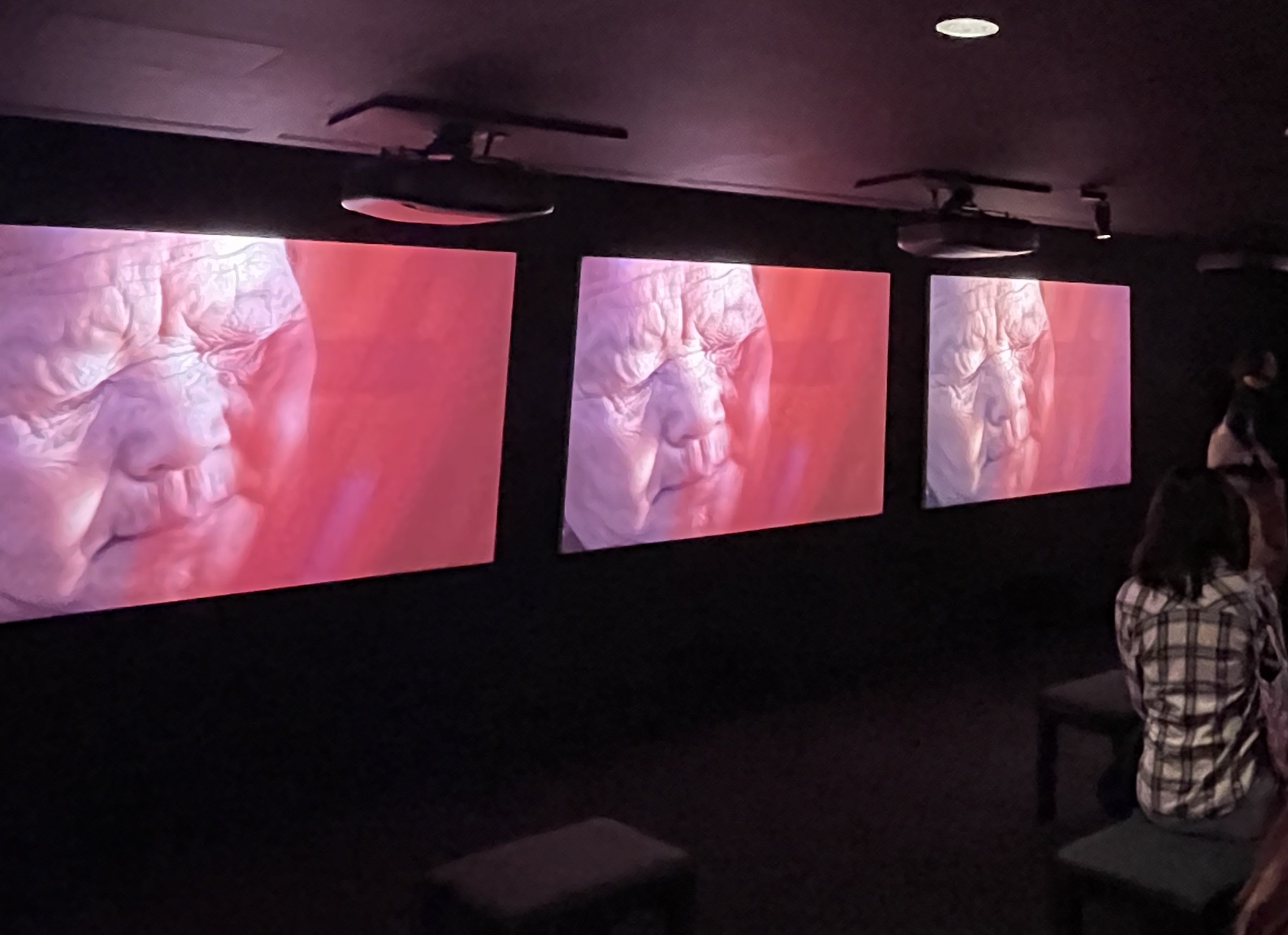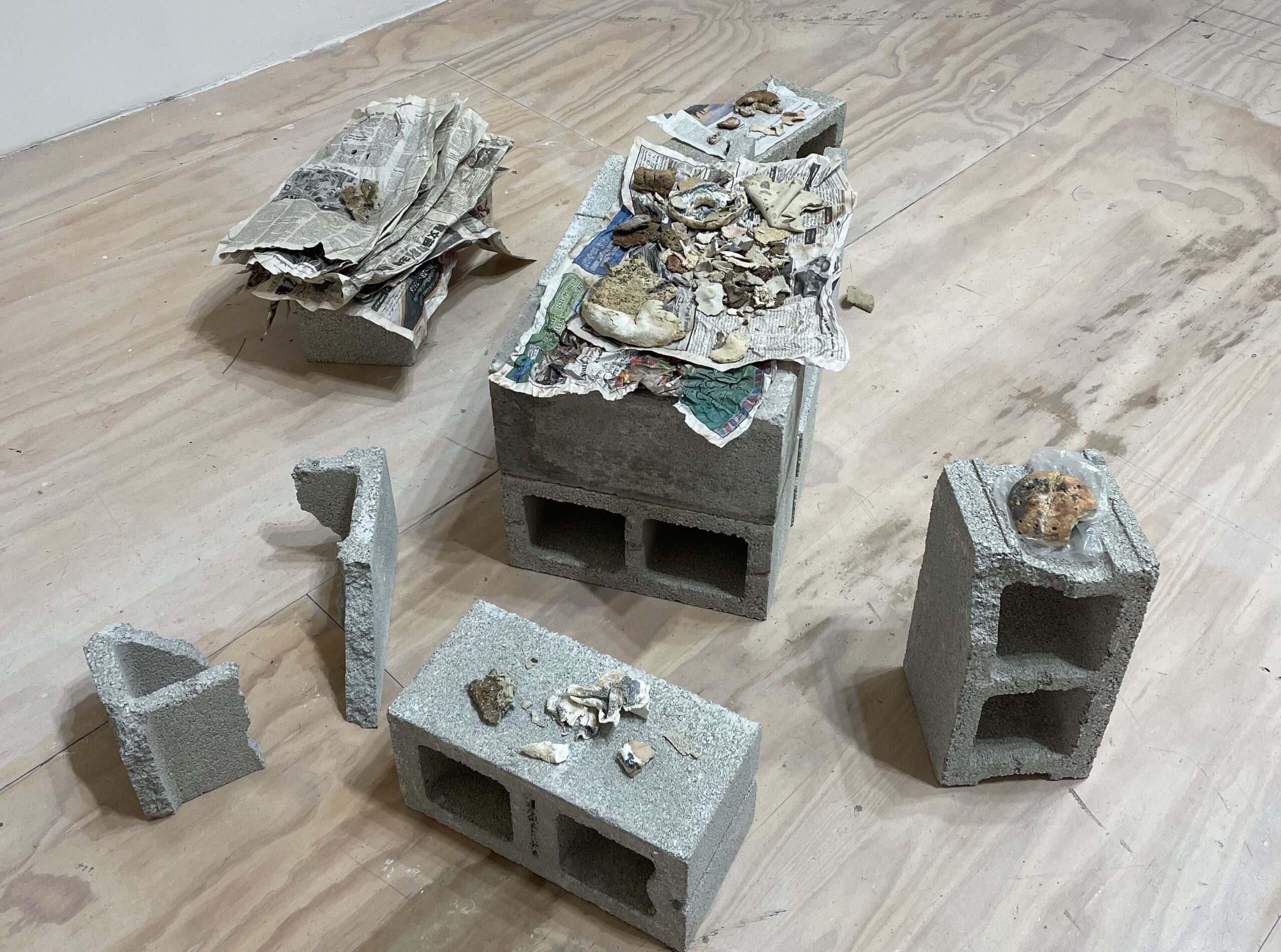MA Students Visit The Met and MoMA PS1
In Fall 2022, our first-year M.A. students took a field trip to NYC to visit exhibitions and meet with curators at the Metropolitan Museum of Art (The Met) and MoMA PS1.
The trip was part of the first-year students’ core course requirement (HRA 501: The Politics of Interactive Live Art), taught by CHRA Director, live artist Tania El Khoury. Second-year students from HRA 606: Practicing Encounter: Arts of Violent Pasts and Presents were also on the trip. HRA 606 is an elective course developed and taught by current CHRA Fellow, scholar and curator Lara Fresko Madra. The trip was organized and led by CHRA Programming Producer, artist and community organizer Polina Malikin and CHRA M.A. Program Coordinator, live artist Adrienne Truscott.
At The Met, students first saw Before Yesterday We Could Fly: An Afrofuturist Period Room. The exhibition imagines a period room in Seneca Village, a vibrant nineteenth-century community of predominantly Black landowners and tenants. In 1857, to make way for Central Park, the city of Manhattan seized Seneca Village land, displacing its residents and leaving behind only fragments of a flourishing community. Before Yesterday We Could Fly is powered by Afrofuturism and speculative practices by Black artists, writers, and thinkers. It is one of many possible propositions of what might have been “had Seneca Village been allowed to thrive in the present and beyond.”
Students met with Clare Davies, Associate Curator of Modern and Contemporary Art, Middle East, North Africa, and Turkey and discussed the making of the Afrofuturist period room, the concept and implications of a “period room,” and potential frictions between powerful art institutions and displaced communities.
Fresko Madra connected students with Brinda Kumar, Associate Curator at The Met. Kumar introduced Amar Kanwar’s The Lightning Testimonies, explaining the cultural-political context of the work and the origins of its presentation at the museum. Kanwar’s piece is an eight-channel installation of synchronized video projections that play over 32 minutes. The videos in the installation present “a constellation of accounts of women who have experienced sexual violence.” The piece covers multiple temporalities and time periods, beginning with the partition of India and Pakistan in 1947, and ending with the historic 2004 anti-rape protests in Manipur.
Fueled by a coffee break and a pizza lunch, students took the subway across boroughs to see Break, Take, Erase, Tally, visual artist and filmmaker Jumana Manna’s exhibition at MoMA PS1, Queens. Break, Take, Erase, Tally features two of Manna’s recent films—Foragers (2022) and Wild Relatives (2018)—as well as a series of new and existing sculptures. The exhibition presents Manna’s multidisciplinary practice, which “explores the paradoxical effects of preservation practices in agriculture, science, and the law.”
The group met with MoMA PS1 curator Ruba Katrib CCS ‘07, who discussed the process of presenting Manna’s first major museum exhibition in the US, and the excitements and challenges of curating multidisciplinary work.
The exhibitions on the trip offered students the opportunity to work through the various questions raised in their core coursework with Tania El Khoury. What are the political motivations and potential of art? How do artists make work with communities, rather than about communities? What does it mean to present work to different audiences, who may or may not know about the specific cultural-political contexts of an artistic work?
For students in Lara Fresko Madra’s course, the exhibitions on this trip offered examples of artists and artworks that navigate multiple temporalities. How do artists encounter, think through, and reckon with structures of injustice that persist and transform through time? How do artists intentionally and unintentionally encounter violent pasts and presents? How do the past, present, and future interact in artistic practices and works?
The MA program at the OSUN Center for Human Rights and the Arts seeks to provide a rich, holistic experience grounded in research, practice, and community engagement. Experiential learning opportunities such as this one form a critical part of the M.A. program curriculum. Each semester, CHRA organizes different field trips, guest visits, and cultural activities as part of the MA student experience.




Image credits: the group in Central Park, NYC, photo by Adrienne Truscott; students meeting with curator Brinda Kumar and CHRA fellow Lara Fresko Madra at The Met, photo by Polina Malikin; Before Yesterday We Could Fly: An Afrofuturist Period Room, The Lightning Testimonies (by Amar Kanwar), and Old Bread International (by Jumana Manna), photos by Garrett Sager HRA ‘23.
Post Date: 10-15-2022
The trip was part of the first-year students’ core course requirement (HRA 501: The Politics of Interactive Live Art), taught by CHRA Director, live artist Tania El Khoury. Second-year students from HRA 606: Practicing Encounter: Arts of Violent Pasts and Presents were also on the trip. HRA 606 is an elective course developed and taught by current CHRA Fellow, scholar and curator Lara Fresko Madra. The trip was organized and led by CHRA Programming Producer, artist and community organizer Polina Malikin and CHRA M.A. Program Coordinator, live artist Adrienne Truscott.
At The Met, students first saw Before Yesterday We Could Fly: An Afrofuturist Period Room. The exhibition imagines a period room in Seneca Village, a vibrant nineteenth-century community of predominantly Black landowners and tenants. In 1857, to make way for Central Park, the city of Manhattan seized Seneca Village land, displacing its residents and leaving behind only fragments of a flourishing community. Before Yesterday We Could Fly is powered by Afrofuturism and speculative practices by Black artists, writers, and thinkers. It is one of many possible propositions of what might have been “had Seneca Village been allowed to thrive in the present and beyond.”
Students met with Clare Davies, Associate Curator of Modern and Contemporary Art, Middle East, North Africa, and Turkey and discussed the making of the Afrofuturist period room, the concept and implications of a “period room,” and potential frictions between powerful art institutions and displaced communities.
Fresko Madra connected students with Brinda Kumar, Associate Curator at The Met. Kumar introduced Amar Kanwar’s The Lightning Testimonies, explaining the cultural-political context of the work and the origins of its presentation at the museum. Kanwar’s piece is an eight-channel installation of synchronized video projections that play over 32 minutes. The videos in the installation present “a constellation of accounts of women who have experienced sexual violence.” The piece covers multiple temporalities and time periods, beginning with the partition of India and Pakistan in 1947, and ending with the historic 2004 anti-rape protests in Manipur.
Fueled by a coffee break and a pizza lunch, students took the subway across boroughs to see Break, Take, Erase, Tally, visual artist and filmmaker Jumana Manna’s exhibition at MoMA PS1, Queens. Break, Take, Erase, Tally features two of Manna’s recent films—Foragers (2022) and Wild Relatives (2018)—as well as a series of new and existing sculptures. The exhibition presents Manna’s multidisciplinary practice, which “explores the paradoxical effects of preservation practices in agriculture, science, and the law.”
The group met with MoMA PS1 curator Ruba Katrib CCS ‘07, who discussed the process of presenting Manna’s first major museum exhibition in the US, and the excitements and challenges of curating multidisciplinary work.
The exhibitions on the trip offered students the opportunity to work through the various questions raised in their core coursework with Tania El Khoury. What are the political motivations and potential of art? How do artists make work with communities, rather than about communities? What does it mean to present work to different audiences, who may or may not know about the specific cultural-political contexts of an artistic work?
For students in Lara Fresko Madra’s course, the exhibitions on this trip offered examples of artists and artworks that navigate multiple temporalities. How do artists encounter, think through, and reckon with structures of injustice that persist and transform through time? How do artists intentionally and unintentionally encounter violent pasts and presents? How do the past, present, and future interact in artistic practices and works?
The MA program at the OSUN Center for Human Rights and the Arts seeks to provide a rich, holistic experience grounded in research, practice, and community engagement. Experiential learning opportunities such as this one form a critical part of the M.A. program curriculum. Each semester, CHRA organizes different field trips, guest visits, and cultural activities as part of the MA student experience.




Image credits: the group in Central Park, NYC, photo by Adrienne Truscott; students meeting with curator Brinda Kumar and CHRA fellow Lara Fresko Madra at The Met, photo by Polina Malikin; Before Yesterday We Could Fly: An Afrofuturist Period Room, The Lightning Testimonies (by Amar Kanwar), and Old Bread International (by Jumana Manna), photos by Garrett Sager HRA ‘23.
Post Date: 10-15-2022
